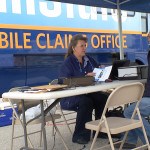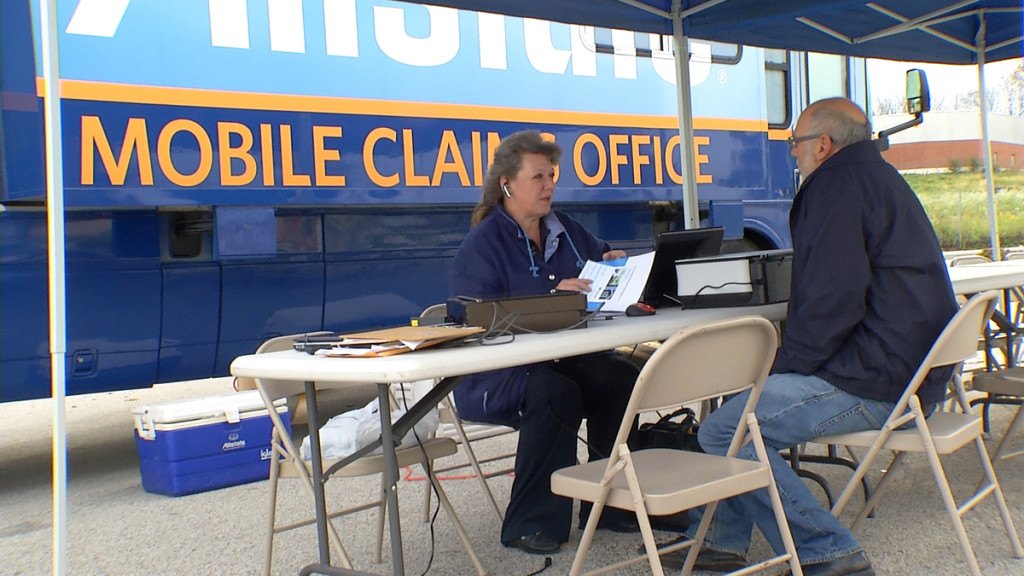When disaster strikes, your organization’s response is only as good as your workforce. Timing is everything and you need to be staffed for the unexpected. How can you assess your human capital situation to be sure you’re ready?
According to the Bureau of Labor Statistics, insurance industry unemployment is currently at 4.4 percent – still elevated in comparison to pre-recession days. At that rate, it would seem that the industry would be abundant with available talent. However, a difficult recruiting climate begs to differ. According to the Semi-Annual U.S. Insurance Labor Market Study, conducted at the beginning of this year by The Jacobson Group and Ward Group, recruiting is more difficult in most disciplines this year than it was last year. This situation is exacerbated by a widening skills gap affecting our industry.

With the challenges our industry faces, hiring fast is difficult. The property and casualty sector is continually being tested, with severe weather becoming more common in recent years. Now is the time to evaluate your staffing situation to ensure you are ready to face the unexpected. This calls for an assessment of your current staff and resources, as well as some exploration of your options. To get you started, here are five questions to consider to determine CAT staffing preparedness:
1.Do we have the capability to set up mobile claims centers?
Policyholders expect immediacy and mobile claims units are becoming the norm. Do you currently have a mobile claims center that can operate securely in any region where disaster strikes? A physical, local presence goes a long way in times of need; this is when you show your policy holders strength. Your staff, mobile unit, systems and other incidentals should be ready to deploy as soon as the storm passes.
2.Do we have first response teams set up?
Are your first response teams prepared? These employees must be well-versed on policy provisions. Is your team large enough that calls are being answered and returned in a timely manner? As you know, these employees must be able to communicate well and with compassion with the ability to solve problems quickly. A short-staffed team is at risk for low morale.
3.Do we have a disaster reaction team? Where do we turn when all of our resources are being utilized?
Sometimes, despite how proactive you were, resources just run out. You need a back-up plan. Research available service providers that you can turn to. Think about how hands-on or hands-off you want the relationship to be. Evaluate your current needs and expectations.
If you determine that a temporary staffing firm is the route to go, ensure that the firm understands your business well enough to provide efficient and effective talent quickly. Gain an overview of their recruiting and hiring methodology. Do not assume that your staffing firm conducts background checks and screenings; have it written into your contract and hold them accountable for compliance.
A successful vendor relationship will be with a provider that understands your specific product lines and required skill sets. Think about the questions you want to ask potential providers:
- Can they provide resources in your target regions?
- How well does the firm understand your business?
- How rapidly can they deploy candidates?
- Does the firm have qualified references and a history of industry experience?
4.Do we have an internal CAT response plan?
What about your internal emergency response plan? A well-developed plan and in-depth training will keep your operations running smoothly. Ensure that employees are well aware of their roles and a clear communications guide is in place. An in-house staff that is confident and collected is necessary to support those in the field.
5.Are we making training a priority?
It should come as no surprise that training is a top concern. In addition to mandatory training sessions, consider offering optional training for staff who want to take initiative and bring their careers to the next level. Utilize manuals and online training, as well as on-the-job training, for a well-rounded course.
Training should be an ongoing effort. Your continuing education program is just as important as new-hire training. As a rule of thumb, tie training into career development. Provide incentives that encourage true commitment among your staff.
A solid training program goes hand-in-hand with employee retention—another area that plays into your staffing preparedness. Make sure your employees know they have a future in the company and their work is appreciated. Seasoned employees are an important part of your CAT team!
Once you’ve explored these issues, you’ll be better equipped to identify your areas of need. More importantly, you have some ideas on how to meet them. Time to get to work! Hire stand outs and grow them into top performers. Know your limitations and have a backup plan.
Our industry is constantly adapting to meet policy holder needs and the race is on to develop the most seamless response to catastrophic events. Always keep your eyes open for opportunities to innovate. Your staff is your best defense when the unexpected occurs—make sure to put the right amount of time and effort into ensuring your workforce is strong.
 David E. Coons is senior vice president of The Jacobson Group, the leading provider of talent to the insurance industry. Coons leads the firm’s temporary and temp-to-hire practice, which provides experienced insurance talent to manage workload fluctuations, including those triggered by CAT events. He can be reached at (800) 466-1578 or dcoons@jacobsononline.com.
David E. Coons is senior vice president of The Jacobson Group, the leading provider of talent to the insurance industry. Coons leads the firm’s temporary and temp-to-hire practice, which provides experienced insurance talent to manage workload fluctuations, including those triggered by CAT events. He can be reached at (800) 466-1578 or dcoons@jacobsononline.com.
Was this article valuable?
Here are more articles you may enjoy.


 US Eyeing Ship’s Electrical System After Baltimore Bridge Crash
US Eyeing Ship’s Electrical System After Baltimore Bridge Crash  Credit Suisse Unit Did ‘Incompetent Best’ for Billionaire Client, Lawyer Says
Credit Suisse Unit Did ‘Incompetent Best’ for Billionaire Client, Lawyer Says  National Crime Report Shows Vehicle Thefts Surged to More than 1 Million in 2023
National Crime Report Shows Vehicle Thefts Surged to More than 1 Million in 2023  Report: Vehicle Complexity, Labor ‘Reshaping’ Auto Insurance and Collision Repair
Report: Vehicle Complexity, Labor ‘Reshaping’ Auto Insurance and Collision Repair 